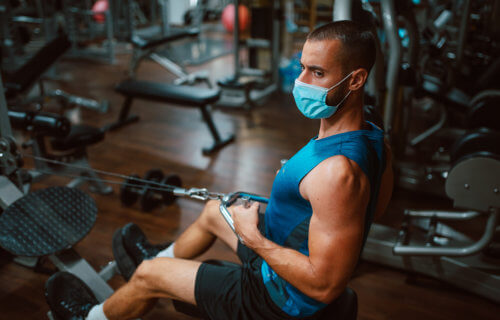PASADENA, Calif. — Exercising more often can result in less severe COVID-19 symptoms, according to researchers from Kaiser Permanente. Don’t wait until you test positive to start working out. People who were active before their COVID infection had a lower risk of severe health outcomes.
Importantly, this trend held across various demographics and even among those dealing with additional chronic health conditions. More exercise had a connection to lower rates of hospitalization or death after COVID-19 infection. While African-American, Hispanic, and Asian patients did display a greater risk of adverse outcomes in comparison to Caucasian patients, more exercise still led to milder COVID-19 outcomes overall.
“The main message is that every little bit of physical activity counts,” says lead author Deborah Rohm Young, PhD, the director of the Division of Behavioral Research for the Kaiser Permanente Southern California Department of Research & Evaluation, in a media release. “The more exercise the better, no matter a person’s race, ethnicity, age, sex, or chronic conditions.”
Even people with pre-existing conditions benefit
This work built on earlier research by closely assessing the association between exercise and COVID-19 outcomes across various demographics, as well as numerous chronic conditions. Dr. Young and her team analyzed electronic health records encompassing 194,191 adult patients at Kaiser Permanente in Southern California who tested positive for COVID between January 2020 and May 2021. Notably, that time period was before widespread COVID-19 vaccination efforts.
Each patient reported their own usual physical activity levels prior to infection through a routine measure called the Exercise Vital Sign. Those responses helped researchers assign patients into one of five categories ranging from “always inactive” (10 minutes of exercise or less per week) to “always active” (150 minutes of exercise per week).
A subsequent statistical analysis showed that the more a person exercised, the lower their risk of both hospitalization or death within 90 days of testing positive for COVID-19. This held up across all activity levels, but people who exercised the most enjoyed the lowest risk levels.
Among patients living with certain underlying chronic conditions like hypertension, cardiovascular disease, or obesity, more exercise continued to show a link to lower hospitalization rates. This is especially important because all of those conditions increase one’s risk of poor COVID-19 outcomes, according to prior studies.
“Our findings drive home the need for physicians to emphasize to their patients that getting vaccinated and being more physically active are 2 of the most important things you can do to prevent severe outcomes of COVID-19,” adds the study’s senior author, Robert E. Sallis, MD, a family and sports medicine physician at the Kaiser Permanente Fontana Medical Center.
“This is a powerful opportunity to develop stronger policies supporting physical activity as a pandemic-mitigation strategy. Our study provides new evidence to inform appropriate interventions across demographic groups,” Dr. Young concludes.
The study is published in the American Journal of Preventive Medicine.

